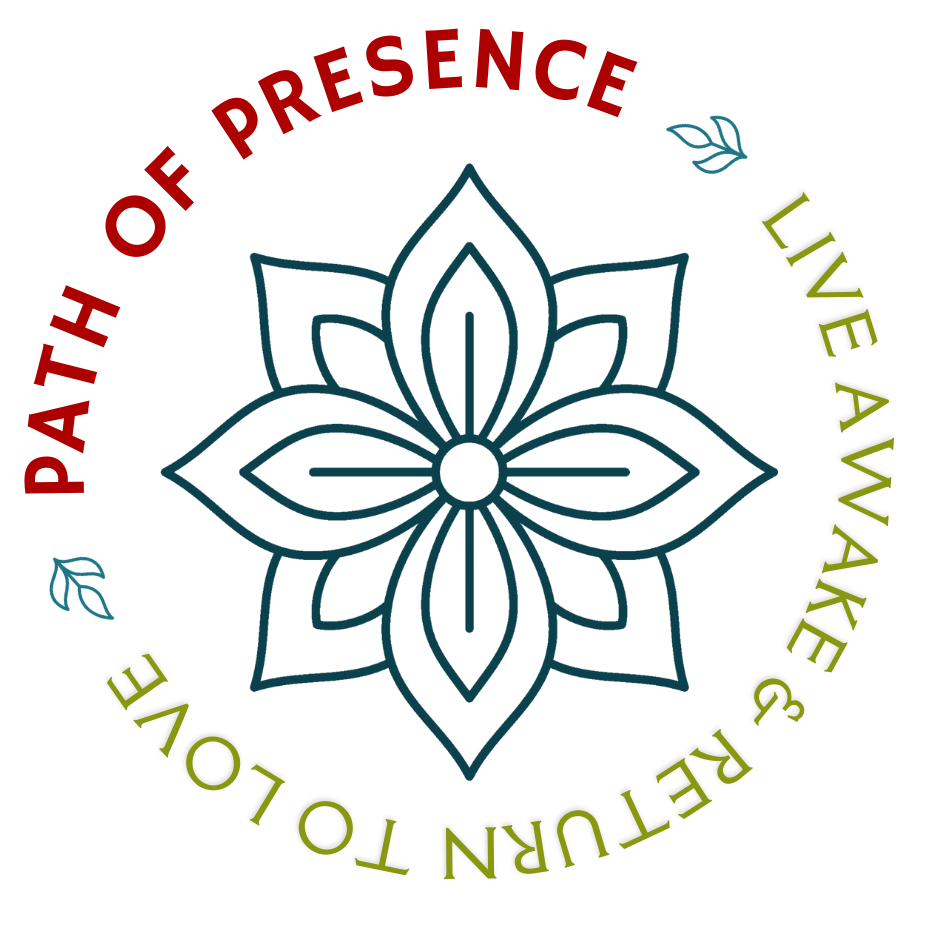
Mindfulness Healing: Transform Trauma with Presence
In the quiet spaces of our hearts, where the echoes of past pain often reside, there is a gentle invitation to return to presence and heal. This blog post is a soulful conversation designed for those seeking relief from trauma through mindfulness—a journey toward true inner healing.
Whether you are just beginning your path or have traveled many miles along the road of healing practices, this guide is here to offer heartfelt guidance, compassionate insights, and empowering practical tips that nurture radical self-care.
Understanding Trauma and Its Impact
Trauma shapes lives in profound ways. It often leaves us feeling disconnected from ourselves and those we love. In our fast-paced world, the effects of trauma—whether from significant events or a buildup of everyday stressors—can weigh heavily on the spirit. Trauma isn’t something to hide away or minimize; it’s a part of our human experience and an invitation to cultivate deeper understanding and care.
The Weight of Trauma on the Heart and Mind
When we experience trauma, our nervous systems are often thrown out of balance, leaving behind memories and responses that seem to dictate how we interact with our inner selves and the world.
You might notice that certain moments trigger intense emotions or physical reactions—a reminder that the past is still present. Acknowledging these reactions is the first step in reclaiming your power, a process beautifully supported by mindfulness.
Mindfulness teaches us that while the past has left its marks, we also have the capacity to respond to our pain with gentleness. By observing our inner experiences without judgment, we can reintroduce a sense of safety and calm.
Whether you’re exploring guided meditations, journaling, or simply sitting quietly in reflection, the regular practice of mindfulness becomes a lifeline amidst the noise of unresolved trauma.
How Trauma Disrupts Our Connection to the Present

Trauma often creates a disconnect from the here and now. The mind may rehash painful memories and emotions, keeping us tethered to suffering. Yet mindfulness offers a way back to the present moment—a space where healing begins.
Imagine your mind as a vast landscape, and each breath as a gentle step on a winding path. With each mindful moment, you reclaim a fragment of that lost connection, opening your heart to healing one breath at a time.
It’s essential to understand that every step on this journey is personal and unique. For some, the path is a slow unveiling of layers, while for others, moments of clarity burst forth unexpectedly. What remains constant is the power of being fully present with whatever arises. This deep presence nurtures resilience and offers a safe harbor where trauma’s echoes lose their power.
Embracing Mindfulness: A Gentle Path to Healing
In this section, we dive deeper into mindfulness as a transformative practice for healing. Mindfulness isn’t just a technique—it’s a way of being that encourages you to embrace life with full presence, even when facing the shadows of the past.
Introducing Mindfulness Into Your Daily Life
Mindfulness begins with simple awareness—paying attention to your breath, sensations, emotions, and thoughts as they come and go. Consider starting your day with a few deep breaths or setting aside a quiet moment to sit and notice what is in your heart.
These practices plant seeds of self-compassion and create ripples of inner healing that extend into every aspect of your day.
For busy souls, mindfulness can be woven into everyday activities. Whether you’re washing dishes, taking a walk, or enjoying a cup of tea, these moments hold the potential for deep presence and healing. As you bring mindfulness into your daily routines, you are gently training your mind to be a caring and attentive witness to your inner life.
Cultivating a Mindful Heart Amidst Pain
At times, trauma can make your internal world feel overwhelming. But even in your darkest moments, mindfulness offers you a safe place to simply be. When painful memories arise, try noticing them as if you were watching passing clouds. Acknowledge their presence with gentle curiosity rather than resistance. Remember: every difficult emotion carries with it the possibility of insight.
A loving, mindful heart understands that emotional healing is not about forcing positivity but rather about cultivating acceptance. By giving yourself permission to feel fully—without judgment—you create room for compassion. Acknowledging your pain, in essence, transforms it into a source of strength.
Mindfulness Meditation: Techniques for Inner Calm
Meditation is a powerful tool in the mindful healing repertoire. Regular practice builds resilience, reduces stress, and fosters a sense of inner sanctuary.
Here are a few guided exercises to help integrate mindfulness into your healing journey:
The Breath Awareness Meditation:
Find a comfortable seated position. Close your eyes and bring your attention to your breath. Notice the sensations of the air moving in and out of your body. When your mind wanders, gently bring it back to your breath. With each return, you reinforce a neural pathway of calm and focus.
Body Scan Meditation:
Lying down comfortably, slowly shift your awareness from your toes to the crown of your head. Notice each body part without any need to change or fix anything. This practice acknowledges every sensation, from tension to relaxation, reminding you that healing is holistic.
Loving-Kindness Meditation:
Sit quietly and imagine a warm light in your heart. Silently repeat phrases such as “May I be safe, may I be happy, may I be healthy, may I be at ease.” Extend these wishes to others—starting with loved ones and eventually embracing all beings.
Regular practice of these exercises not only calms the mind but also nurtures a deep connection with your true self—a connection that trauma may have disrupted.
Healing Practices and the Path to Spiritual Growth
Healing trauma with mindfulness is deeply intertwined with practices that invite spiritual growth. In every moment of awareness, there is potential for transformation—a rebirth of the soul where ancient wounds can slowly dissolve into wisdom.
The Intersection of Mindfulness and Spiritual Growth

Spiritual growth is often defined by an evolving journey of self-discovery and a deepening connection to something greater than oneself. This growth is nurtured by mindfulness, which encourages you to slow down, listen to your inner voice, and honor your authentic self.
In many spiritual traditions, healing and mindfulness are seen as complementary forces. For those healing from trauma, embracing mindfulness opens the door to reconnecting with your spirit. Every mindful breath becomes an opportunity to rediscover your intrinsic worth and purpose. The journey isn’t solely about overcoming pain—it’s about embracing the fullness of who you are.
Embracing Healing Practices Rooted in Self-Care
Healing is an active process that calls for both courage and tender care. Radical self-care involves setting boundaries, honoring your needs, and engaging in practices that restore equilibrium and joy. For many, self-care begins with simple acts—such as mindful movement, journaling, and seeking supportive communities. It is in these moments of nurture that the body and mind find the space to mend.
Try creating a daily ritual that supports your healing process: light a candle, play soothing music, or indulge in a favorite mindful practice. Over time, these acts build a sanctuary of calm and love around you. Healing practices are not about perfection but about creating small, sustainable habits that affirm your worth.
Integrating Mindfulness into Daily Healing Practices
True healing happens in the subtle, everyday moments when we choose to be present. By integrating mindfulness into daily routines, you can create pockets of sanctuary—even amid chaos.
Daily Rituals for Mindful Healing
Begin your mornings by setting an intention. Speak softly to yourself, affirming that you are worthy of healing and growth. This simple act can transform your mindset and set a compassionate tone for the rest of your day.
Take time to savor your morning beverage—be it tea, coffee, or water—and notice the warmth in your hands, the aroma that comforts, and the flavor that anchors you in the present moment.
In addition to morning intentions, consider incorporating small mindful breaks throughout your day. When you feel overwhelmed or triggered, pause and take several deep breaths. Feel the air as it enters and leaves, reconnecting you with a central sense of calm. Let these moments remind you that the healing power of mindfulness is always available, waiting patiently to support you.
Journaling as a Mindful Healing Practice
Journaling is a powerful way to weave mindfulness into your healing process. It allows you to become the observer of your own thoughts and emotions, fostering a sense of clarity and self-compassion. Writing about your feelings not only validates your experiences but also illuminates patterns that can pave the way for growth.
As you journal, try these mindful techniques:
Begin by noting the physical sensations in your body. Are there parts that feel tight or heavy?
Explore your emotions without self-criticism—allow words to flow like a gentle stream.
Reflect on moments of gratitude and hope, balancing the heaviness with acts of self-kindness.
Mindful Movement for Healing Trauma
Connecting with your body is another vital aspect of healing trauma. Mindful movement such as yoga, tai chi, or even slow, intentional walking can create profound shifts in how you feel about yourself. These practices combine physical movement with mindful awareness, allowing you to release tension and become more present in your body.
Yoga, in particular, has long been a healing practice, inviting you to honor both strength and vulnerability. The poses and breathing techniques help to release pent-up energy, clearing the mind and healing the body simultaneously. Even a short daily practice can have transformative effects on your overall sense of well-being.
A Journey of Spiritual Growth Through Mindfulness
Healing from trauma with mindfulness is not merely about recovering from past pain—it’s also about stepping into the fullness of your spiritual potential. This process of spiritual growth is layered, deeply personal, and enriched by every mindful moment you embrace.
Awakening the Spirit Through Mindful Awareness

Spiritual growth often begins with a quiet awareness—a gentle noticing of the deeper parts of your being. When you sit in silence and allow your thoughts to settle, you may begin to notice the subtle stirrings of a more expansive self—a self that is connected to a greater sense of purpose and love.
Allow yourself to be open to inner wisdom, trusting that every breath is a step toward greater clarity. This openness can gradually transform your relationship with pain, turning trauma into a teacher and catalyst for growth.
Practical Tips for Living Mindfully Through Trauma
Even with a deep understanding of mindfulness and its transformative power, integrating these practices into everyday life can be challenging—especially when old wounds resurface.
Here are some practical tips to anchor you in mindful healing as you navigate the complexities of trauma recovery.
Establishing a Daily Mindfulness Routine
Start with a commitment to a daily mindfulness routine, even if it’s just for a few minutes each day. Create a peaceful space, free from distractions, where you can engage in meditation, journaling, or quiet reflection. Set an intention before you begin your practice, such as “I allow myself to heal” or “I embrace the present with love.”
Over time, a consistent routine will foster inner resilience and provide structure during times when emotional turbulence peaks. Remember: like any healing journey, the benefits of mindfulness build gradually over time.
Recognizing and Honoring Your Emotions
Mindfulness teaches you to become aware of your emotions as they arise and to honor them without judgment. When you experience overwhelming feelings, pause, and acknowledge them with kindness. Consider placing a hand on your heart and silently saying, “It’s okay to feel this way.” This small act of self-acceptance reminds you that your emotions are valid—and that healing begins with honoring your truth.
Over time, you may find that emotional resilience grows as you learn to let emotions pass like clouds, each moment of awareness serving as a bridge between your inner pain and your healing capacity.
Seeking Out Supportive Communities
Healing is not a solitary journey. Surround yourself with communities that honor mindful living and support your path of healing. Whether it’s joining a local meditation group, participating in online forums about trauma recovery, or connecting with a trusted friend who shares your values, these supportive networks offer inspiration, understanding, and validation.
By engaging with others who are on a similar path, you can share insights, challenges, and successes. This exchange of wisdom reinforces the healing power of connection and collective spiritual growth.
Integrating Mindfulness in Moments of Crisis
Crisis moments can trigger old wounds. When you find yourself caught in the grip of panic or sadness, pause and engage in a grounding practice. Simple techniques, such as placing your feet firmly on the ground, noticing the sensations in your body, or taking several slow, deliberate breaths, can help bring you back to the present moment. Even a short pause can defuse the intensity of an emotional storm and remind you of your inner sanctuary.
Remember that every moment of crisis carries the potential to become a moment of mindful transformation. Embrace these challenging times as opportunities to practice resilience, knowing that each breath taken in awareness is a step toward healing trauma with mindfulness.
Reflections on a Journey of Healing and Presence

Throughout this exploration, we have shared insights, practical tips, and soulful reflections on how to heal from trauma with mindfulness. It’s a journey that requires patience, courage, and an unwavering commitment to self-compassion. As you move forward on this path, remember that healing is not about a sudden transformation, but rather a gradual unfolding of resilience and beauty.
Embracing the Process of Becoming Whole
Healing is often described as a process of reassembling the scattered parts of ourselves that trauma has fractured. It involves recognizing that healing is not linear and that each day offers new opportunities for awareness and renewal. In moments of both struggle and triumph, allow yourself to be present, knowing that every experience is an integral part of your unfolding story.
I invite you to honor each step of this process—celebrate the small victories, learn from setbacks, and trust that with every mindful breath, you are drawing closer to the person you aspire to become.
Embracing Courage in the Face of Vulnerability
Courage does not always roar; sometimes, it is the quiet voice at the end of the day that says, “I will try again tomorrow.” Healing from trauma requires immense courage—the courage to face uncomfortable truths, to sit with your pain, and to trust that you can heal. In each moment of vulnerability, there is profound strength waiting to be awakened.
Mindfulness teaches us to treat ourselves with the same gentle care we would extend to a cherished friend. When you allow yourself to be vulnerable, you invite authenticity and transformation into your life. Remember that every step you take, no matter how small, is an act of bravery and an affirmation of your commitment to healing.
Final Reflections
Your journey of healing from trauma with mindfulness is a sacred voyage—a path marked by moments of bravery, self-discovery, and gentle transformation. As you reflect on the insights and practices shared in this post, I encourage you to let them inspire you to take another mindful step today. Whether it is through meditation, journaling, or simply pausing to breathe, know that each act of presence is a step toward a more radiant and aligned you.
Support Path of Presence.
In this process, be patient and compassionate with yourself. Healing is not about rushing to a destination; it’s about savoring the journey and honoring every moment along the way. Trust that the mindfulness you cultivate is a bridge from your pain to a place of peace and spiritual growth. This is your call to deeper awareness—a call to live courageously, love deeply, and remain always present.
Remember: healing trauma with mindfulness is not about forgetting the past; it is about transforming it into a foundation for a brighter, more compassionate future.
Embrace your journey and let your light shine.










